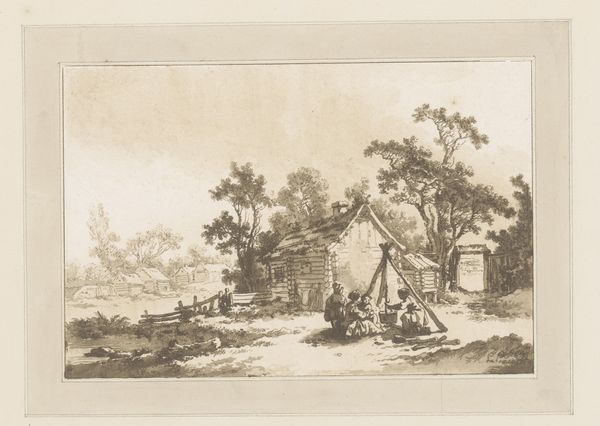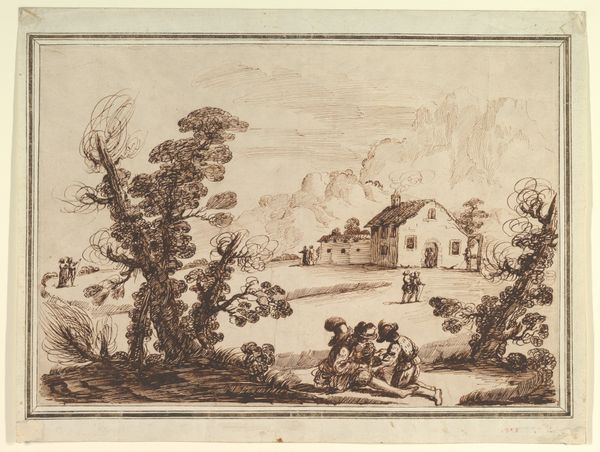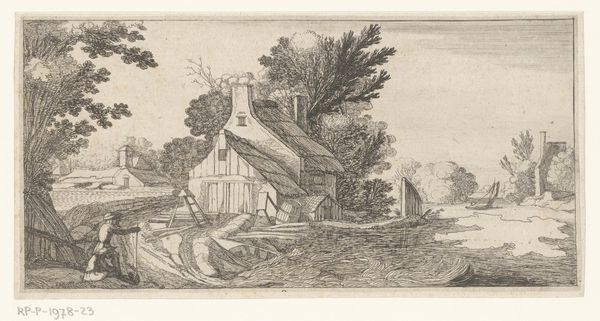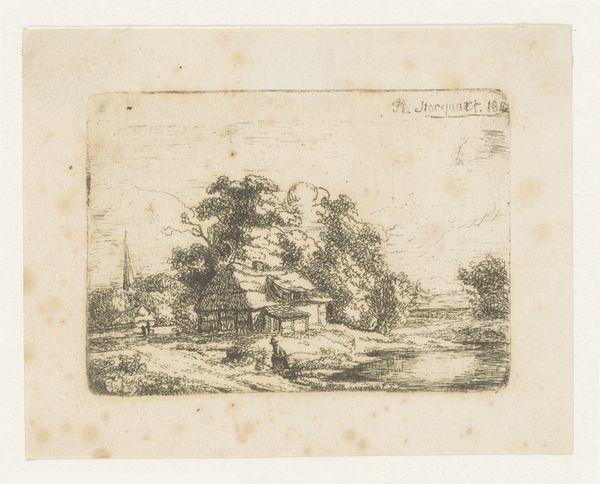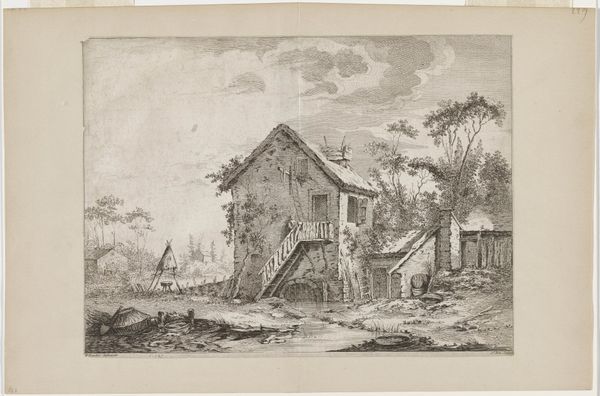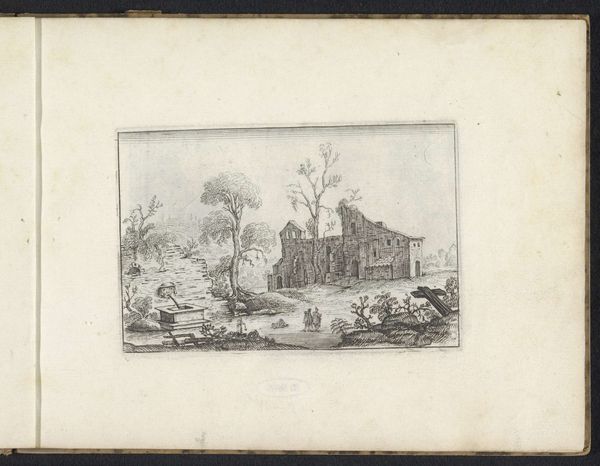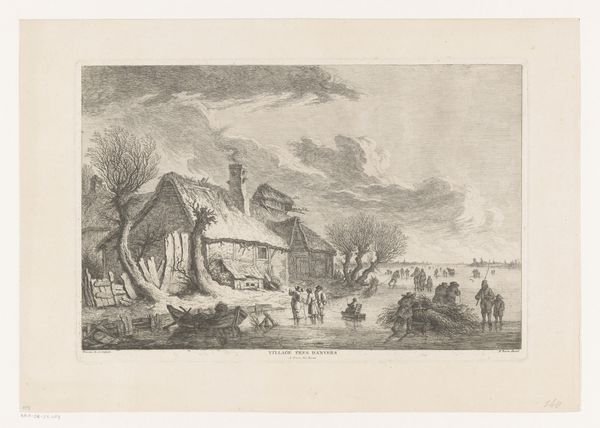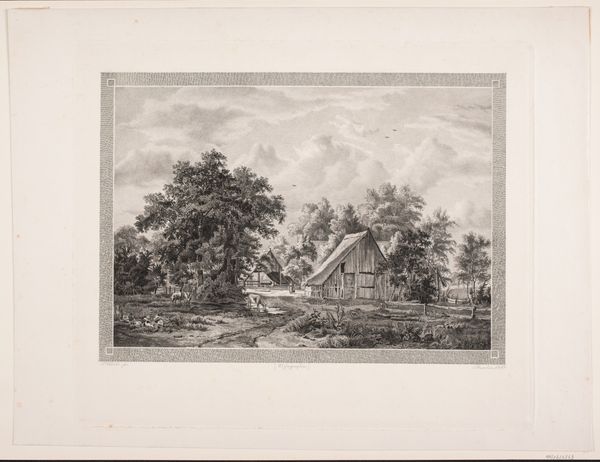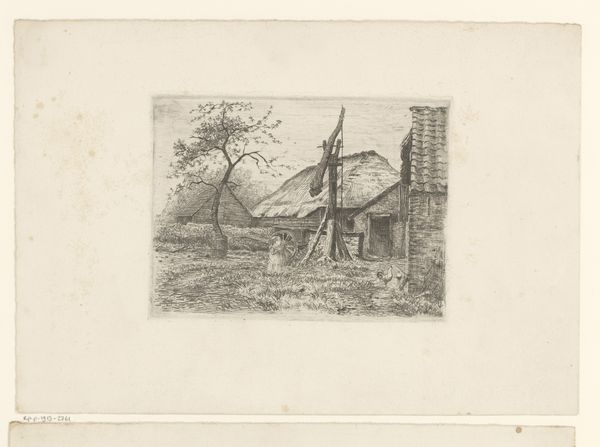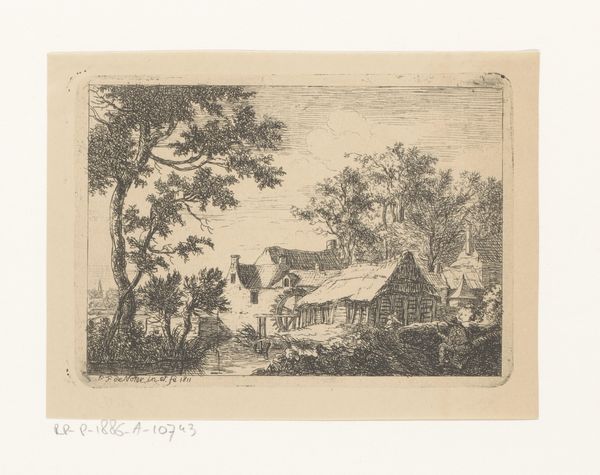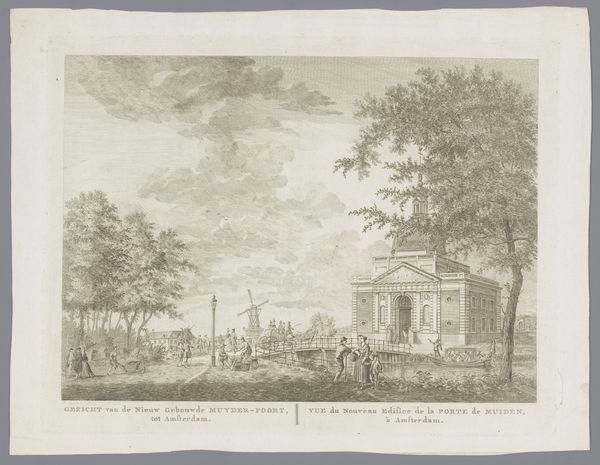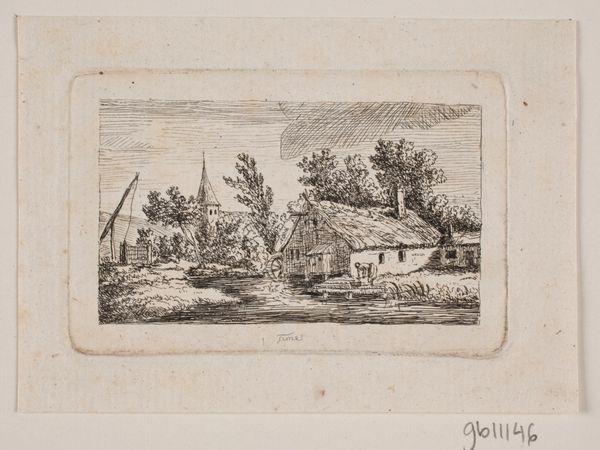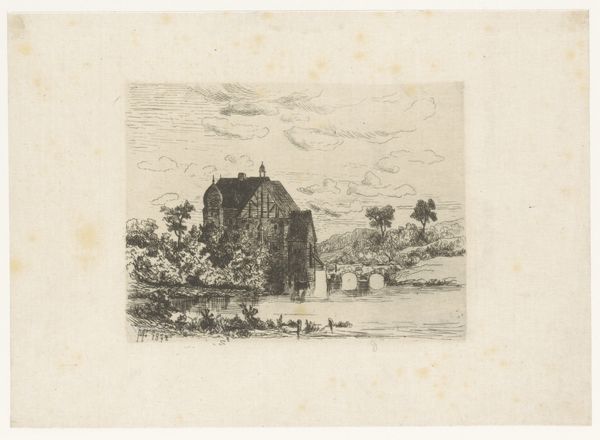
Twee hutten aan een steiger met vissers en andere figuren 1768
0:00
0:00
drawing, etching, paper
#
drawing
#
etching
#
landscape
#
etching
#
paper
#
genre-painting
Dimensions: height 149 mm, width 183 mm
Copyright: Rijks Museum: Open Domain
Editor: So, this is "Two Huts on a Jetty with Fishermen and Other Figures" by Jean Baptist Leprince, from 1768. It's an etching on paper. I’m immediately drawn to how it captures such a seemingly mundane scene, almost like a snapshot. What catches your eye when you look at this work? Curator: It's interesting that you call it mundane. I see it as a constructed view of the rustic life, a pastoral scene idealized for a specific audience. Think about who would have purchased such a print in 1768. Not the fishermen! More likely, wealthier individuals who romanticized the lives of the working class. This work participates in the artistic trends and the philosophical leanings of the Enlightenment period when there was this focus on representing everyday life. Editor: That's a perspective I hadn’t considered. I was focused on the content. It looks very naturalistic! Are you saying it's not an authentic representation? Curator: Authenticity is always a tricky concept with art, especially from this era. Look at the composition. Is it a true reflection of a real jetty? Or a picturesque arrangement designed to appeal to certain aesthetic sensibilities? The groupings of figures, the light, the slightly ruined structures - they all contribute to a narrative about simple, rural life, presented in a way that flatters the tastes of the elite. How does the knowledge that this was probably made for an elite consumer change your perception? Editor: It definitely makes me reconsider the initial impression. It becomes less about a truthful depiction and more about fulfilling an expectation. The image serves as a token of its time, with an insight into class structures and aesthetic desires of the late 18th century. Thanks, that gives me a lot to think about! Curator: Precisely! And that's the beauty of art, isn't it? It is a reflection, however distorted, of its time.
Comments
No comments
Be the first to comment and join the conversation on the ultimate creative platform.
